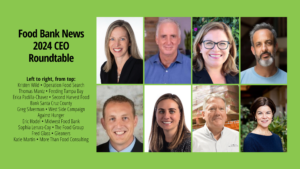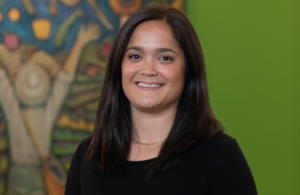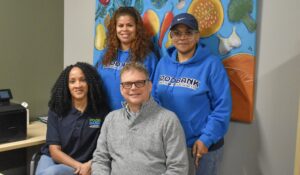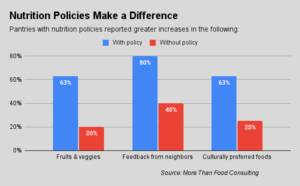Food is Medicine offers incredible opportunities to use federal and state healthcare dollars to provide people with nutritious food. One issue is that everyone wants in on that opportunity.
Food banks are well-positioned to receive government funds to do Food is Medicine. So are a growing number of private food box and meal companies. And grocers. And even this farmer!
“There are a lot of people going after that healthcare dollar, including our incredible grocery partners,” said Eric Cooper, President and CEO of San Antonio Food Bank. “They all want to receive funding from healthcare to deliver medically tailored groceries.”

Cooper is working on a way to put food banks firmly in line to get that healthcare funding. In a recent webinar, he put forth a vision that would put food banks into partnership with entities like grocery stores, rather than having to compete against them.
At the center of his envisioned solution is a digital purchase card (a more sophisticated version of a gift card). Cards provided by food banks would let patients purchase healthy food at any one of a number of local grocers, while keeping food banks at the center of the relationship with patients. At the same time, the cards would still steer foot traffic to local grocers.
“However [the program] is designed, it’s in our hands,” Cooper said. “But retailers win. We are driving customers into their stores.”
In Cooper’s view, food banks would win as well, because equipping patients with digital purchase cards so they can purchase their own healthy food can save a food bank a lot of effort and expense. A tricky reality of healthcare-prescribed food is that it rarely can be fulfilled by relying on donated food, which is food banking’s wheelhouse.
Rather, food banks must often purchase specialized healthy food, and then still engage in all the logistics required to get that food to patients – storing it, packaging it, transporting it, and distributing it. Cooper highlighted the logistical burden by noting that it takes seven hours to drive from one end of his food bank’s service area to the other. “We asked, ‘How can we do this better?’”
Cooper’s vision allows food banks to leverage the existing retail-grocery infrastructure, and then add additional services. He sees food bank-provided cards as being the entry point to a more holistic Food is Medicine intervention.
People calling the food bank to obtain a digital purchase card could also be screened for SNAP, nutrition education, pantry visits, job training and other community services. “If we can say, ‘Send your patients to us because we can curate an intervention that’s holistic versus just food,’ then I think we can win this race,” Cooper said. “I think we’re best positioned to be the recipient of the healthcare spend on food.”
San Antonio Food Bank is already testing how digital purchase cards can work in food banking. Its first taste came during the pandemic when it began handing out cards instead of food because it just couldn’t access enough food to meet the immediate need. “It worked really great because it was efficient and effective” versus having “a truck and a bunch of pallets of food,” Cooper said.
Now the food bank is working with digital card provider iQPay to help it address hard-to-reach parts of its service area. People who live a long distance from food assistance or who need a specific item that’s not in stock can call the food bank and immediately receive a card by text, usable at a local grocer. In the first week of the pilot, the food bank distributed over 700 card offers, 70% of which were quickly redeemed, according to Mike “Red” Solosko, Chief Operating Officer of iQPay, speaking at the webinar.
Later this year, San Antonio Food Bank will also pilot cards for Thanksgiving turkey purchases. Every food bank can relate to the logistical hassle of purchasing truckloads of frozen turkeys, often months in advance to take advantage of lower pricing, then having to store and distribute the birds. With a digital card programmed to support only the purchase of certain types of food, San Antonio Food Bank is hoping to avoid the logistics of turkey distributions while expanding its impact. “We believe that we can get twice as many turkeys out by putting a card in the hands of a neighbor who’s able to go to their local retailer and get that turkey,” Cooper said.
Turkey cards underscore the creative ways that digital card solutions can be deployed by food banks, and Cooper is hoping that some of that creativity will spill over into the Food is Medicine space. The way he sees it, digital purchase cards for healthy food would not displace physical food. “It would just be another tool in the toolbox to get people food in a different way,” he said. “It’s just a new frontier. It’s going to challenge us to think differently.” – Chris Costanzo
Like what you’re reading?
Support Food Bank News













